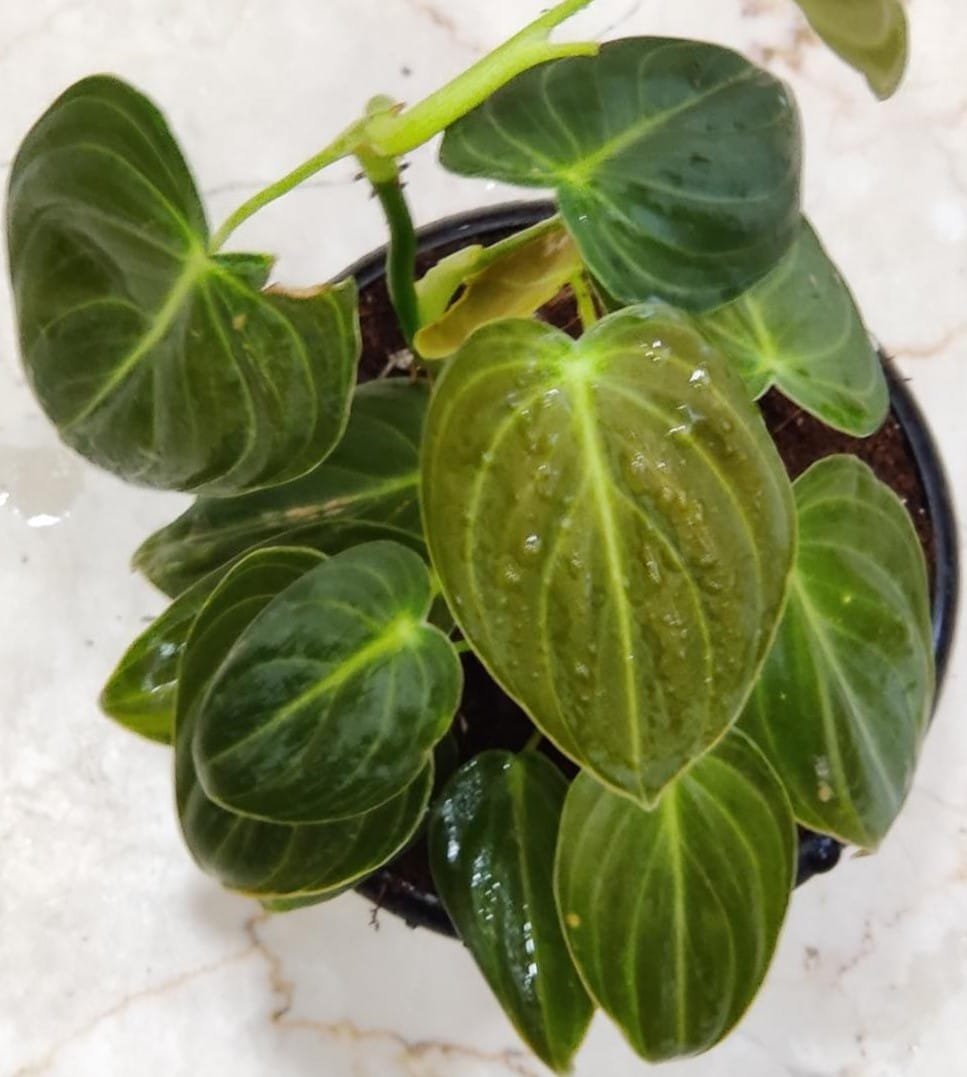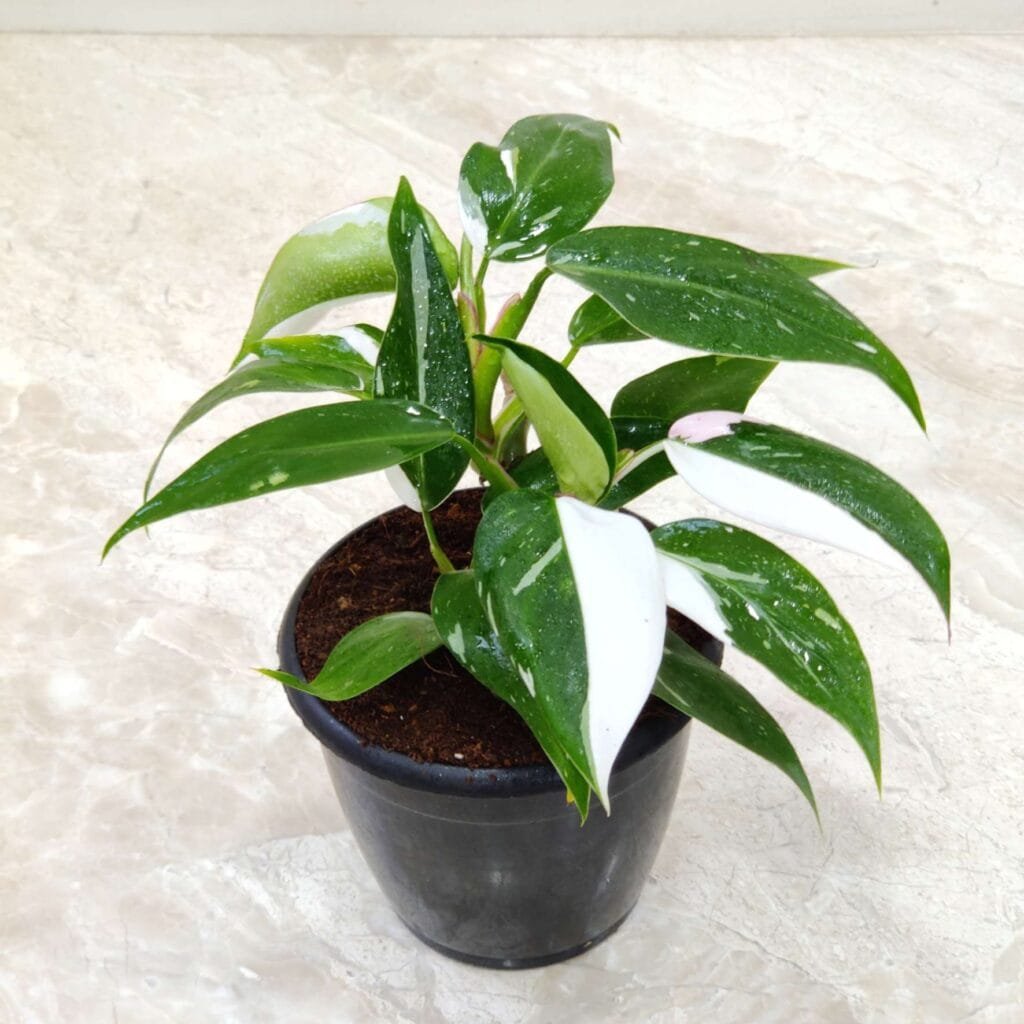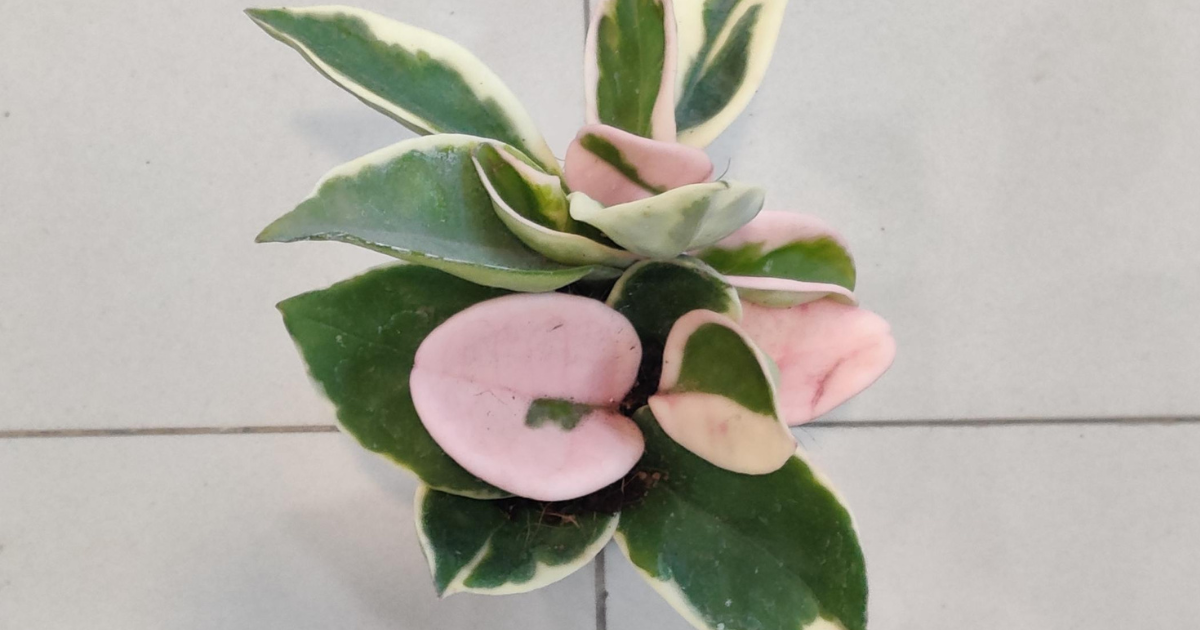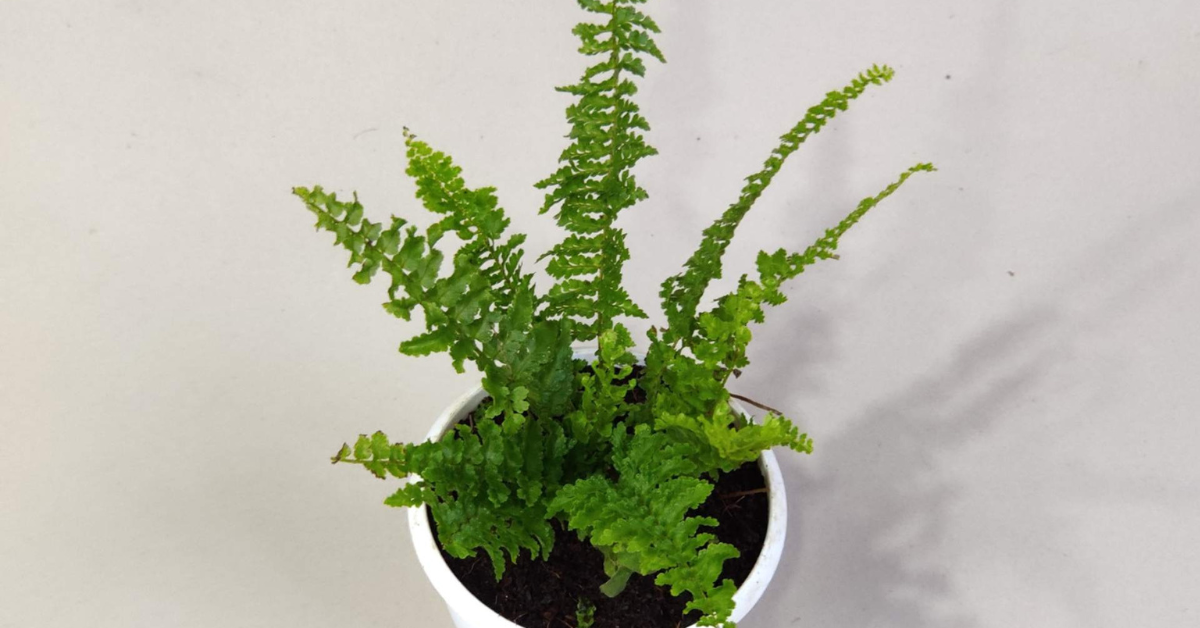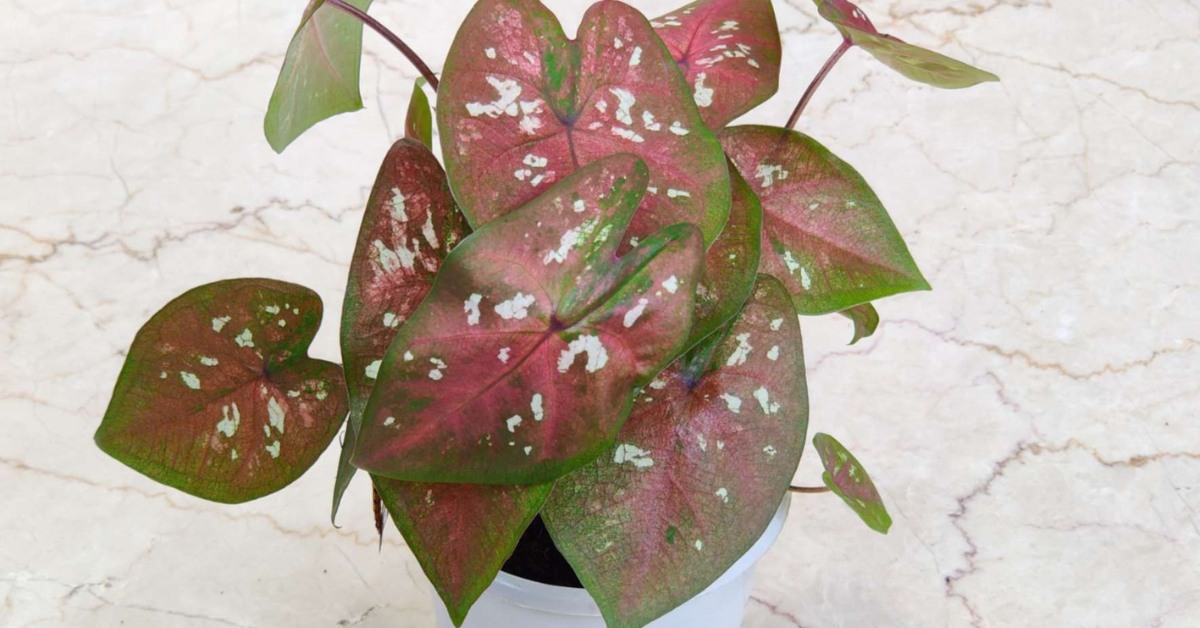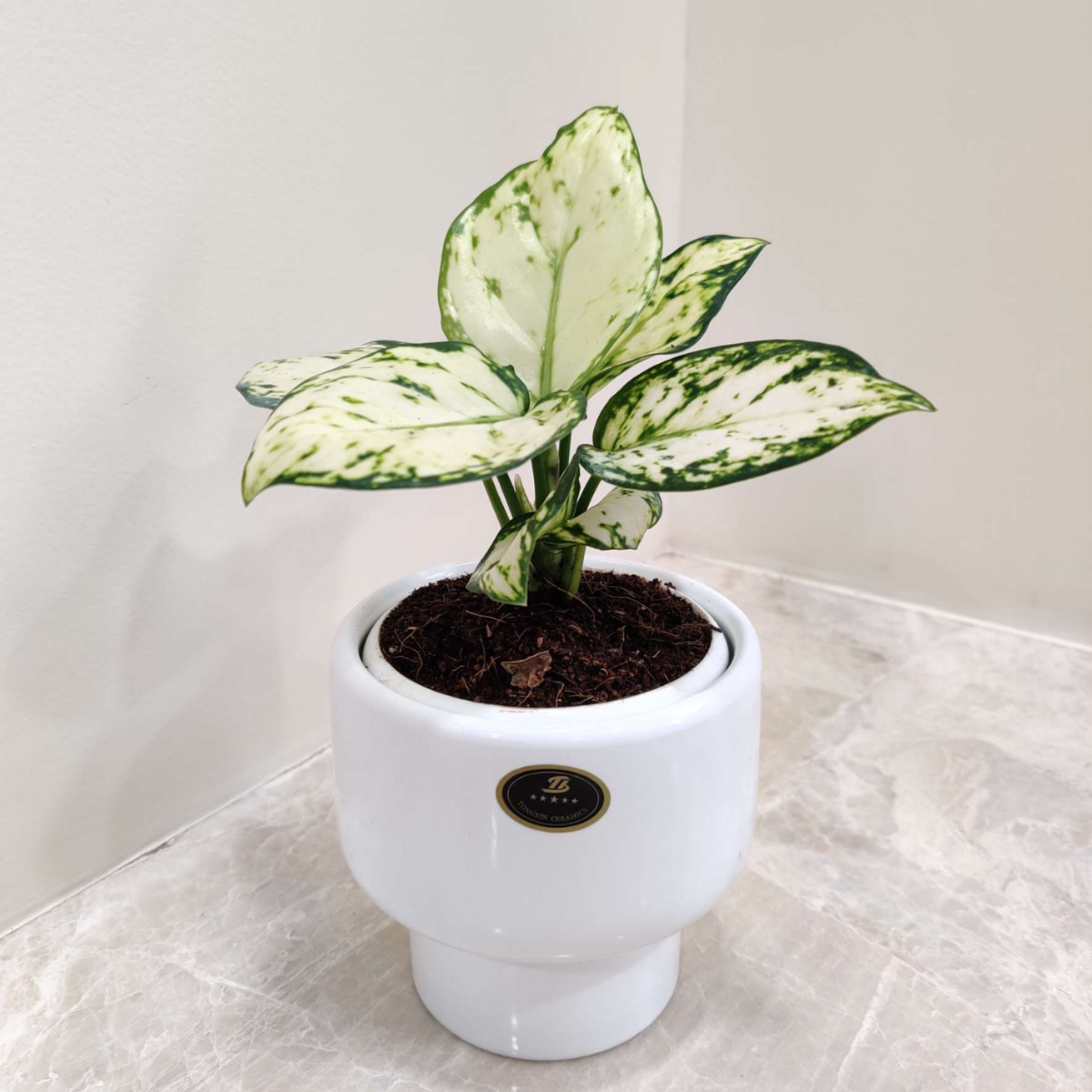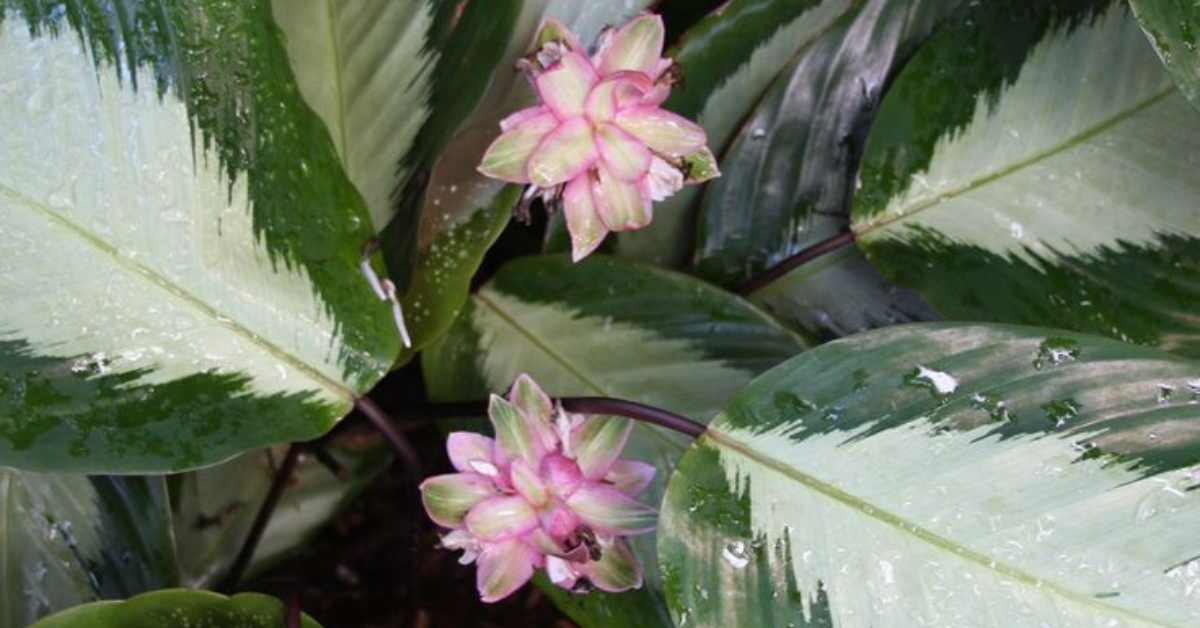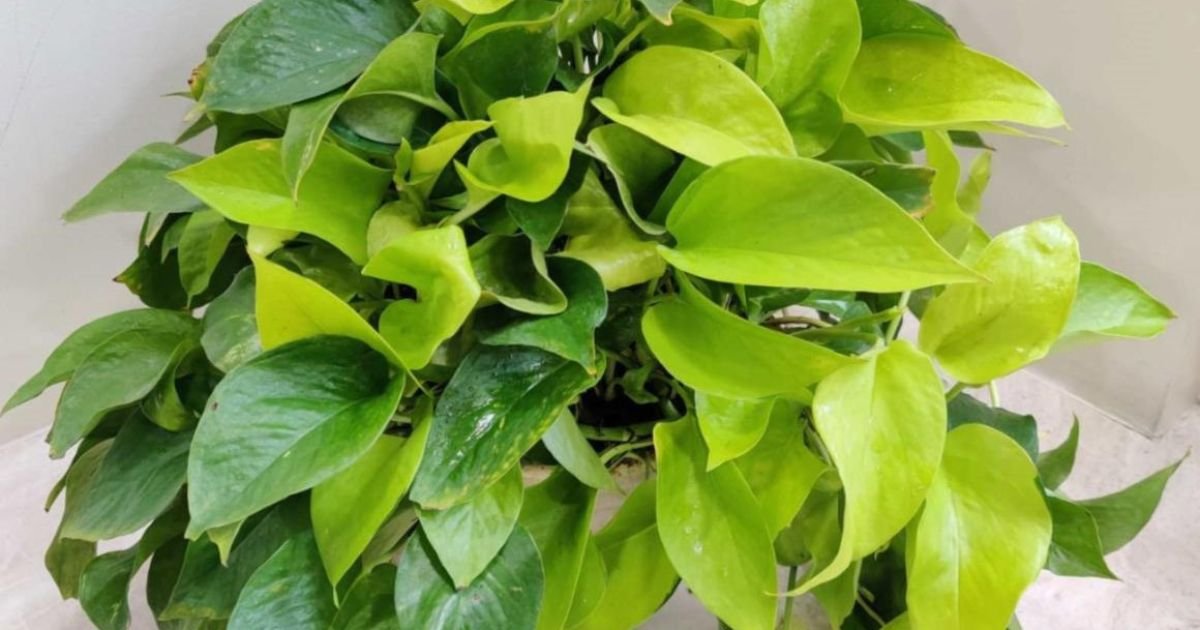Imagine a plant that brings texture, humidity, air purification—and effortlessly adapts to beginner routines. That’s Philodendron micans, the trailing gem adored by indoor gardeners. In this expanded guide, we’ll explore every facet—from root health to creative styling, seasonal care, and handling common pests—so your velvet vine thrives all year.
In this guide, we will explore everything you need to know about Philodendron micans care, including light requirements, watering needs, soil preferences, propagation techniques, and common problems.
Botanical Origins & Physiology
Scientific Identity
Philodendron hederaceum var. hederaceum, commonly known as Philodendron micans, is part of the Araceae family native to warm, humid regions like southern Mexico, Central America, and the Caribbean. Its velvet-green leaves with bronze sheen serve two purposes—light adaptation and aesthetic appeal. The plant’s evergreen trailing habit is characterized by flexible stems, aerial roots, and an ability to climb a support.
Air‑purifying power
Like many aroids, micans helps remove formaldehyde, benzene, and trichloroethylene from indoor air—a bonus when combined with its moisture-transpiring leaves that boost room humidity by up to 10% (source).
Leaf Adaptations
Velvety surface reflects diffused light; new leaves emerge deep red due to anthocyanins, protecting tender tissue until they mature to green. This adaptation supports resilience under varying light levels, enhancing hardiness.
Common Name: Philodendron micans, velvet-leaf philodendron
Botanical Name: Philodendron hederaceum var. Hederaceum
Family: Araceae
Plant Type: Perennial
Mature Size: 8 in. tall, 24 in. long
Sun Exposure: Partial
Soil Type: Loamy, moist but well-drained
Soil pH: Acidic
Native Area: North America, Central America
Toxicity: Toxic to humans and pets
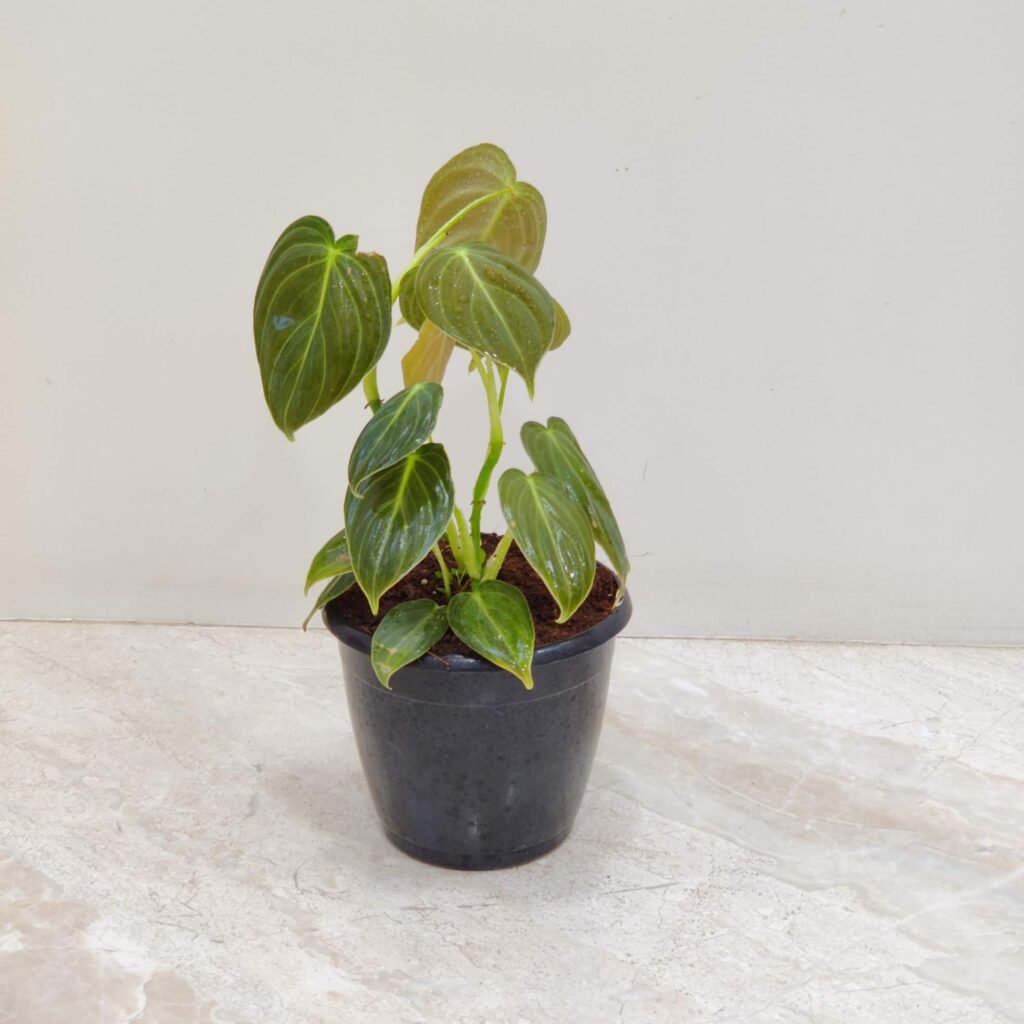
Choosing a “Green Velvet” – Selecting a Healthy Plant
Checklist for buying Philodendron micans:
- Multiple vigorous vines – Ensure at least two long stems (>12 in) and five full leaves on each.
- Check foliage backsides – Use a magnifier to detect thrips, spider‑mite webs, or mealybug fluff.
- Inspect roots – Gently slide plant half-out; look for firm, white/tan roots. Avoid brown, slimy roots that hint at root rot.
- Drainage matters – A draining pot means less risk of fungal issues.
Quick buyer tips:
- Ask nursery staff about plant age; younger plants (6–12 months) are more adaptable.
- Lift the pot: light weight might mean overly dry soil; heavy could mean overwatering.
Light Requirements
Philodendron micans light preferences:
- Bright, indirect light for 6–8 hours/day yields deepest bronze sheen.
- East‑facing windows strike an ideal balance; west mid‑afternoon may scorch leaves.
- Interpret foliage:
- Bronze highlights = great light exposure.
- Uniform deep green = plant waiting for more light.
- Symptoms of light stress:
- Pale, elongated internodes → move closer to light.
- Brown, crispy leaf edges → filter direct sun.
Grow light alternative:
In low-light apartments, supplement with 12-hour LED grow lights. Position ~2–3 feet away.
Pro tip:
Rotate plant 45–90° weekly to encourage even growth and avoid bending toward windows.
Temperature & Relative Humidity
Ideal Ranges:
- Daytime: 65–80 °F (18–27 °C)
- Nighttime: 60–70 °F (16–21 °C); no lower than 54 °F to avoid cold stress
- Humidity: 50–80% (minimum tolerated 40%) — not a fan of dry air
Why humidity matters:
Micans’ thin leaves transpire water. In dry air (<40%), the plant conserves energy by reducing transpiration, slowing growth, and possibly developing droop or crisping.
How to boost humidity:
- Pebble tray: fill with pebbles and a bit of water; plant sits above—evaporation increases humidity.
- Humidifier: especially useful in air-conditioned or heated indoor spaces.
- Group plants: collective transpiration creates a microclimate.
- Bathroom placement: if you have natural light there, the regular showers add humidity.
Temperature extremes to avoid:
- Too cold (<54 °F at night) → leaf drop
- Excessive heat (>86 °F) → stress; move away from heaters or windows in summer
Watering Strategy & Root Health
Water when the top 2–3 inches of soil are dry—test by inserting a finger or using a moisture meter (aim for a reading of 2/4).
Seasonal regimen:
- Summer: Every 5–10 days
- Winter: Every 10–14 days
Try a thorough soak, letting water flow through the drainage holes, then let soil dry before next watering.
Troubleshooting root issues:
- Yellow, mushy stems often root rot — repot in airy mix, trim rotten roots, and reduce watering.
- Use 50/50 indoor water and diluted hydrogen peroxide (1 tsp per gallon) when soil smells musty—helps combat fungus gnat larvae.
Optimal Potting Mix Recipe
Creating the best potting mix for Philodendron micans:
- 30% High-quality peat or coco coir – retains moisture, balances pH (5.5–6.5).
- 25% Orchid bark (fine) – promotes air pockets and prevents compaction.
- 25% Perlite or pumice – improves drainage and root oxygenation.
- 10% Vermicompost (worm castings) – provides natural nitrogen, phosphorus, and microbes.
- 10% Horticultural charcoal (optional) – absorbs toxins and odors.
Layering tip:
Start with ½″ coarse gravel or LECA at the bottom to guard against pot bottom compaction. Pre‑moist mix before planting—neither bone-dry nor soggy.
Scientific note:
The mix mimics the micans’ epiphytic habitat—airy, nutrient-rich bark layers with filtered moisture.
Fertilization Guide
Spring–Early Fall Feeding (Optimal Growth):
- Use a balanced liquid 20‑20‑20 fertilizer, diluted to half strength.
- Apply monthly once new growth appears.
Alternative organic option:
- Add 2 tablespoons of worm castings on the soil surface every three months.
Autumn–Winter (Dormancy prep):
- Reduce light; slow watering
- Stop feeding by late October to prevent weak new shoots
Important note:
Avoid over-fertilization—yellowing or brown leaf edges may indicate fertilizer burn.
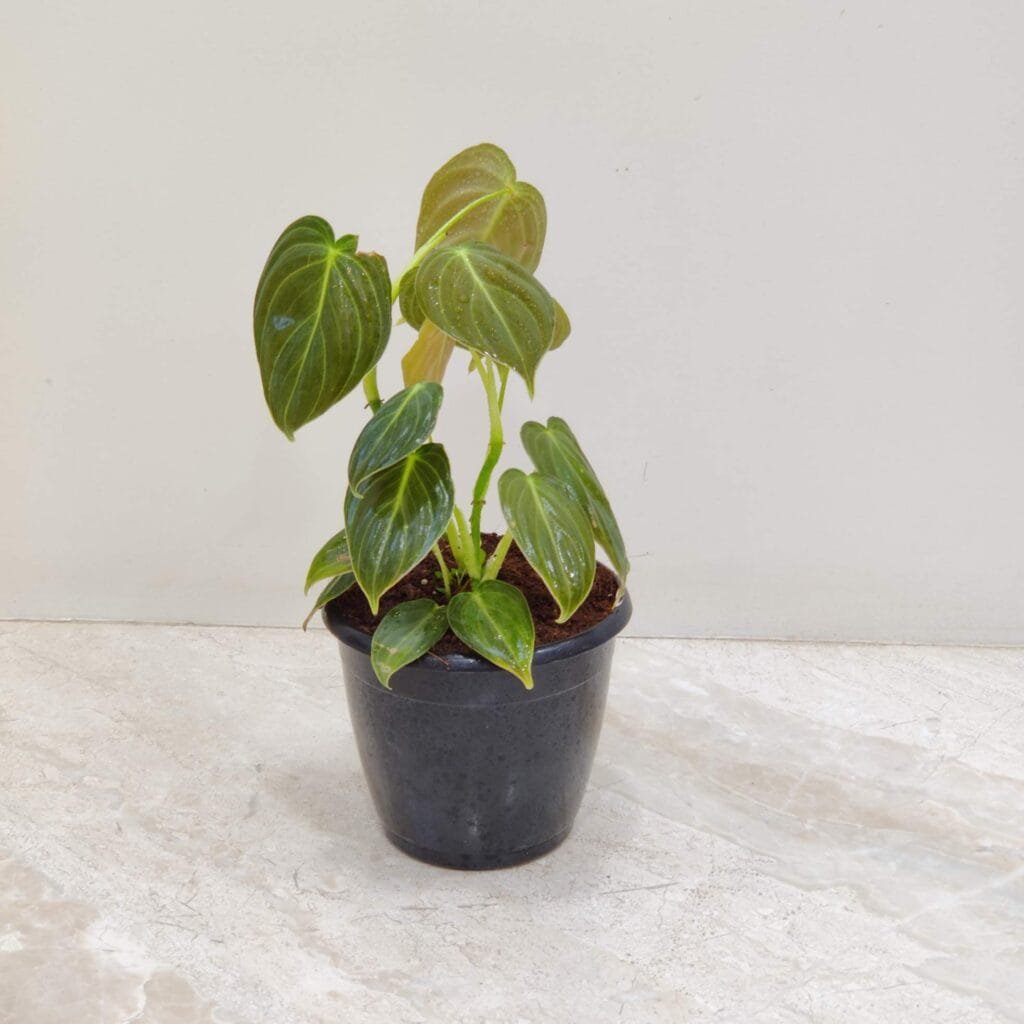
Growth Habit & Styling Ideas
Trailing vs. Climbing habits:
Trailing Displays:
- Hang from macramé at 4–6 ft for a cascading green curtain
- Drape vines across shelves, piers, or bookcases
- Pair with pothos or Scindapsus for layered texture
Climbing Displays:
- Train up a moss pole or trellis, misted weekly to support aerial roots
- Rotating plants encourages even leaf enlargement
- Leaves can grow up to 4–5″ wide on vertical growth—versus 2–3″ when trailing
Tabletop Aesthetic:
- Combine with glossy-leaf houseplants like Anthurium to contrast velvet vs. sheen
- Choose pots in charcoal matte or terracotta to highlight copper undertones
- Group among small succulents or ferns for varied textures
Styling tip: If vines look sparse, propagate cuttings in the same pot—within weeks, baby plants fill gaps.
Propagation Techniques
High success propagation of Philodendron micans using:
Method 1: Water Cuttings (2–3 weeks, ~90% success)
- Cut below node, with aerial root and one leaf
- Remove bottom leaf
- Place in filtered water (jar)
- Change water weekly
- Pot when roots are ~2″ long
Method 2: Sphagnum-Moss Air Layer (3–4 weeks, ~95% success)
- Damp sphagnum wrapped around a node
- Cover with plastic, seal
- After roots appear in the bundle, cut below and pot directly
Method 3: Perlite or LECA Wicking (~4 weeks, ~85% success)
- Insert cuttings with nodes in dry LECA or perlite
- Place ~½″ reservoir of water at bottom
- Monitor moisture, roots will wick water
- When several roots develop, transplant
Repotting & Root Management
When to Repot:
- Every 18–24 months, or when roots are visible through drainage holes or soil is compacted
Steps:
- Pre‑water the day prior for easy removal
- Choose a pot only 1 inch wider
- Gently remove soil, tease roots, trim brown mush
- Refill with fresh mix, add a moss pole if desired, water lightly
- Maintain slightly higher moisture for 2 weeks to aid acclimation
Top Tip: Place a white, labelled tag with repot date and pot size for future reference.
Common Pests & Treatment
Common pests affecting Philodendron micans:
- Mealybugs: small cottony tackles on nodes
Solution: Dip cotton swab in rubbing alcohol and wipe; apply neem oil weekly for 3 weeks - Spider mites: fine webbing, silvery speckling
Solution: Rinse leaves, increase humidity, use insecticidal soap - Thrips: yellow stippling, fast-moving
Solution: Sticky blue traps, introduce predatory mites, spray spinosad weekly
Injury symptoms may also mimic environmental stress (sun damage, low humidity, under watering), so correctly identify first before treating.
Routine preventives:
- Weekly wipe-down of leaves with soft cloth
- Quarantine new plants for 2 weeks before mixing with your collection
Season‑By‑Season Care
| Season | Light | Watering | Fertilizer | Humidity | Notes |
| Spring | Increase hours near east | Every 5–7 days | Monthly feed, ½ strength | 55∓ plus | Begin moss pole training |
| Summer | Bright filtered light | Every 3–5 days | Continue monthly | 60∓ plus | Monitor for pests |
| Autumn | Reduce light gradually | Every 7–10 days | Stop late Oct | 50∓ | Prepare for dormancy |
| Winter | Use brightest spot/LED | Every 10–14 days | No fertilizer | 40–50% | Avoid cold drafts |
Toxicity & Safety
- Contains calcium oxalate crystals—toxic if ingested (pets, children)
- Sap may irritate skin—wear gloves when pruning
- Display hanging or high shelved—great for pet/child safe homes
Final Takeaways
- Understand your micans’ light signals—bronze sheen = happy plant
- Follow the finger‑test watering strategy
- Boost humidity with trays, grouping, or tiny humidifiers
- Pot mix should mimic epiphytic conditions
- Regular propagation = fuller plant
- Act fast on pests; quarantine new acquisitions
Final Thoughts: Why Philodendron Micans Is a Must-Have for Every Plant Lover
Whether you’re a seasoned indoor gardener or just beginning your houseplant journey, Philodendron micans is a standout addition to any home. Curious about how long your Philodendron micans can thrive with proper care?
Read our guide on Philodendron lifespan to learn how to extend the life of your houseplants for years to come.
From improving air quality and boosting humidity to transforming your space with rich, jewel-toned greenery, the micans is more than just decor—it’s a living, thriving companion. With the right light, soil, and watering habits, and a little propagation magic, you’ll enjoy not only lush growth but an ever-expanding indoor jungle.
FAQs
1: Is Philodendron micans rare now?
Not anymore. Tissue culture production since 2021 increased availability, making it widely affordable indoor plant.
2: What are ideal USDA zones for outdoor growth?
Zones 10–11, with shade and shelter. In cooler climates, bring indoors below 60 °F.
3: Why are new leaves red?
The red hue provides anthocyanin protection from bright light; it turns emerald green as leaves mature.
4: My plant is leggy and sparse—help!
Prune leggy stems above a node and propagate the cuttings. Replant them in the same pot to create a fuller, denser vine display.
5: Is misting effective?
Misting temporarily improves humidity but not sustainably. Use a pebble tray or humidifier for reliable humidity maintenance.
6: How to prevent root rot in Philodendron micans?
Ensure you have a fast-draining potting mix (peat/coir + bark + perlite), water only after top soil dries, and use a pot with drainage holes.

